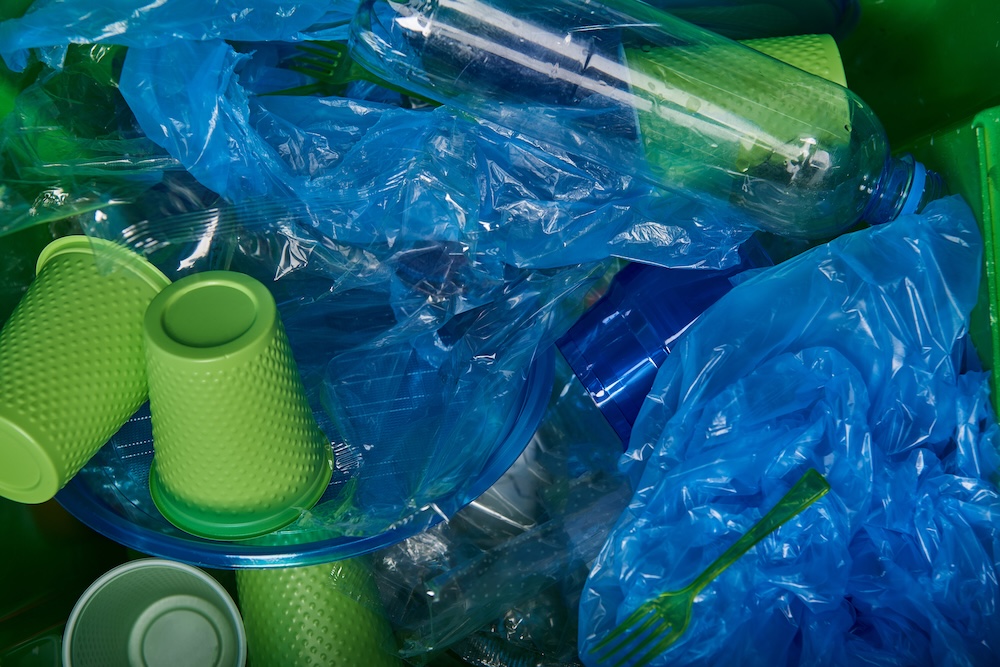What Are Biodegradable Plastics?
Biodegradable plastics are designed to break down more quickly than traditional plastics when exposed to natural environmental conditions. These materials are often made from plant-based sources like corn starch, sugarcane, or even potato starch, and are marketed as a more eco-friendly alternative to petroleum-based plastic.
However, the term “biodegradable” is often misunderstood. Not all biodegradable plastics decompose the same way, and many require very specific conditions — such as industrial composting facilities — to actually break down.
Types of Biodegradable Plastics
PLA (Polylactic Acid)
Derived from corn starch or sugarcane, PLA is one of the most common biodegradable plastics. It’s used in food packaging, disposable cutlery, and even 3D printing filaments.
PHA (Polyhydroxyalkanoates)
PHA is produced by microorganisms that ferment sugars or lipids. It’s fully biodegradable in marine environments and composting systems, making it more versatile in waste management.
Starch Blends
These are often mixed with conventional plastics to make them partially biodegradable. While they reduce the petroleum content, they don’t always break down completely and may leave behind microplastics.
How Do Biodegradable Plastics Break Down?
Composting Conditions Matter
Most biodegradable plastics only break down in high-heat, industrial composting facilities — not in your backyard compost pile or the ocean. This is a major issue because access to these facilities is limited in many parts of the world.
Time to Decompose
While traditional plastic can take 500 years or more to decompose, biodegradable plastics can break down in as little as 3–6 months under the right conditions. However, in landfills — where oxygen and light are scarce — they may behave no differently from conventional plastics.
Are Biodegradable Plastics Better Than Traditional Plastics?
The Environmental Pros
- Lower carbon footprint: Some biodegradable plastics are made using renewable resources, which can reduce greenhouse gas emissions.
- Less long-term pollution: Under ideal circumstances, they break down into non-toxic compounds.
The Environmental Cons
- Limited composting infrastructure: Without proper facilities, they often end up in landfills, where they don’t break down as advertised.
- False sense of security: Consumers may litter more, thinking the material is harmless.
- Microplastic risk: Incomplete degradation can still result in harmful microplastics entering ecosystems.
Biodegradable vs. Compostable: What’s the Difference?
Biodegradable means a product can be broken down by microorganisms over time, but it doesn’t specify how long that takes or under what conditions. Compostable, on the other hand, means it must fully decompose into non-toxic elements within a certain time frame and under specific composting conditions.
Compostable plastics are held to stricter standards — especially those certified “industrial compostable” by organizations like the BPI (Biodegradable Products Institute).
Do Biodegradable Plastics Actually Solve the Plastic Problem?
Unfortunately, biodegradable plastics are not a silver bullet. They reduce some of the environmental harm associated with petroleum-based plastics but bring their own complications. Mass adoption without education and proper waste systems could make the problem worse, not better.
For example:
- If a PLA cup ends up in the recycling bin, it can contaminate the batch.
- If a compostable bag ends up in the ocean, it might not break down fast enough to avoid harming wildlife.
- When sent to landfill, most biodegradable plastics don’t degrade any faster than traditional plastics.
Where Are Biodegradable Plastics Most Useful?
Best Use Cases
- Food-service packaging in cities with industrial composting access
- Agricultural mulch films that degrade in soil
- Medical devices or packaging that won’t enter the regular waste stream
Worst Use Cases
- Single-use items in areas without composting infrastructure
- Products intended for marine or outdoor environments
- Items that might be mistakenly recycled
What Can Be Done to Improve Their Impact?
Smarter Design
Biodegradable plastics should be clearly labeled and used only when appropriate. Designs that make them compatible with composting and recycling systems could reduce contamination.
Better Waste Systems
Municipalities need to expand access to industrial composting and improve waste sorting infrastructure.
Consumer Education
Consumers must understand that “biodegradable” doesn’t mean “harmless” — and doesn’t mean they should be littered or sent to the wrong bin.
Final Thoughts: A Greener Option — But Not an Excuse
Biodegradable plastics offer hope, but they’re not a pass to keep consuming and discarding at current levels. As part of a larger system of responsible production, waste sorting, and reduced consumption, they can help. But without infrastructure and behavior change, they’re just another form of pollution — one with a green label.
FAQs: Common Questions About Biodegradable Plastics
Can I compost biodegradable plastic in my backyard?
Most biodegradable plastics require industrial composting facilities. Only certain certified “home compostable” items will break down in backyard compost piles.
Do biodegradable plastics break down in the ocean?
Not effectively. Many require heat and oxygen that are absent in marine environments. PHA is one of the few types that can degrade in ocean water.
Are biodegradable plastics recyclable?
Usually not. They can contaminate recycling streams and should be kept separate unless specifically labeled as recyclable.
Are all plant-based plastics biodegradable?
No. Some bioplastics are made from plants but have the same chemical structure as petroleum-based plastics, meaning they don’t biodegrade.
What’s the difference between “oxo-biodegradable” and “biodegradable”?
Oxo-biodegradable plastics break down using additives and UV light, often leaving microplastics behind. They are controversial and banned in some countries.
Is switching to biodegradable plastic better than reducing plastic use?
Reducing use is always better. Biodegradable plastics are a step forward, but reduction and reuse have a far greater environmental impact.









Reader Interactions